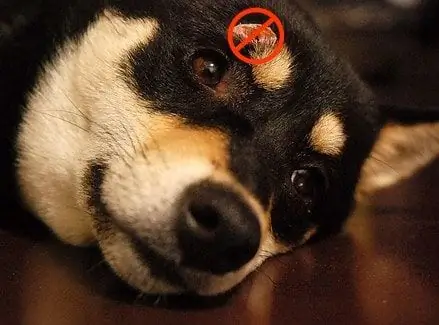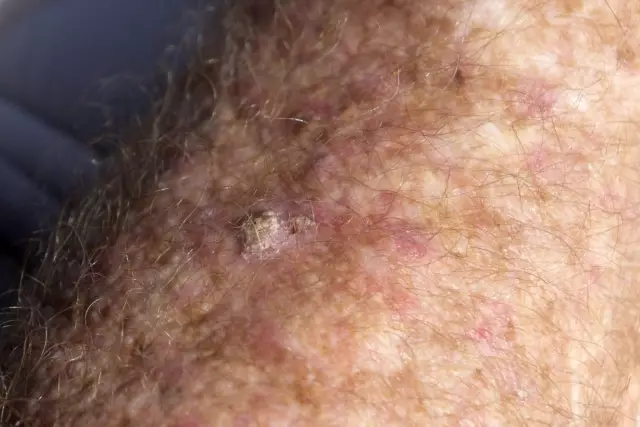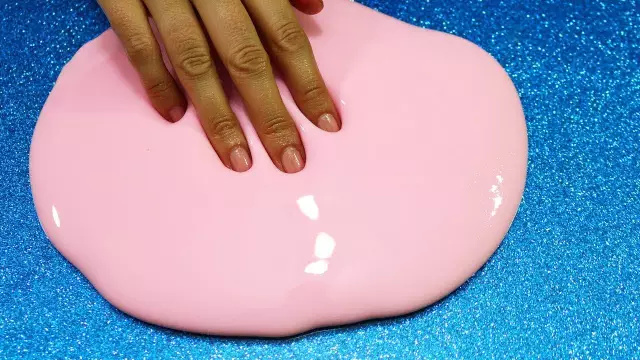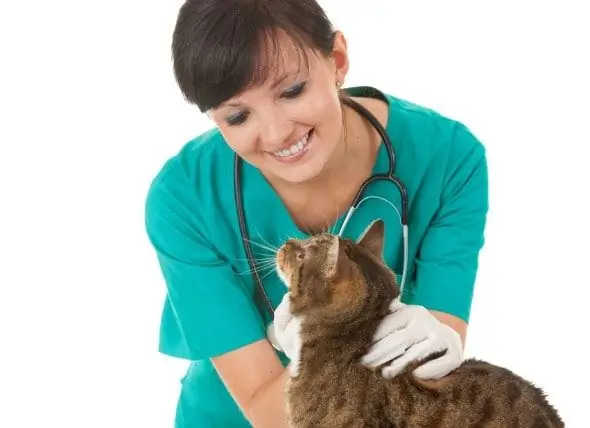
- Autor Daisy Haig [email protected].
- Public 2023-12-17 03:13.
- Naposledy zmenené 2025-01-24 12:42.
Obaja moji francúzski buldogi trpeli nepeknými, často svrbiacimi a technicky nezhubnými nádormi, ktoré nazývame histiocytómy. Aj keď histiocytómy zvyčajne ustúpia po dvoch až troch mesiacoch, neistota pôvodu tohto nádoru vedie väčšinu veterinárov k jeho odstrihnutiu (alebo aspoň k jeho časti), aby sa zabezpečila jeho benígnosť.
Chirurgické skalpovanie „benígnej“hmoty pre vás môže znieť extrémne, ale keďže histiocytómy môžu byť nepríjemné aj desivé, často je nutná operácia.
Nepríjemné: Pretože sa často objavujú na hlave a nohách, na miestach, kde sa dá ľahko poškriabať alebo olizovať dokonale guľatá ulcerovaná hmota.
Strašidelné: Pretože je ťažké zistiť, či to, čo sa práve objavilo na koži vášho psa (a zvyčajne sa to stane rýchlo), je nepríjemný nádor zo žírnych buniek (alebo iná podobná hmota príšery) … alebo jeho ľahší bratranec, histiocytóm.
Strašidelné: Pretože je ťažké zistiť, či to, čo sa práve objavilo na koži vášho psa (a zvyčajne sa to stane rýchlo), je nepríjemný nádor zo žírnych buniek (alebo iná podobná hmota príšery) … alebo jeho ľahší bratranec, histiocytóm.
while young dogs (under three years of age) are more likely to get these, they can happen to dogs of any age. indeed, my older frenchie, sophie sue got one about a year ago. she was nine-not exactly a spring chicken. vincent has had three. and he’s not yet two years old.
some breeds are more predisposed. labrador retrievers and boxers, for example. though frenchies aren’t on the list, perhaps they should be… (perhaps they should be on the list for almost everything if my recent round of healthcare scares is any guide.)
ugly and prominently placed as they typically are, most owners want histiocytomas removed. some vets, however, will counsel owners to either wait a few weeks (especially if the dog is young and statistically less likely to be suffering from a malignant mass) or to have a simple section of it snipped (with a local anesthetic) for histopathological analysis at the pathology lab.
other vets will even take a needle poke at it, though most pathologists find that histiocytomas are not easily disgnosed definitively through this method (cytology).
if the dog is older or the mass is especially annoying to the dog or owner, however, we remove the whole sucker and clean up the mess quickly. unfortunately, though, this approach is more costly and usually requires general anesthesia. it’s nonetheless the approach i take for more than half of these tumors…better to be safe than sorry, right?
still, most owners need to know they have a choice. the nervous nellies among you (like me) are less likely to want to stare at a mass for a couple of months to see if it simply goes away. the rational or more anesthetically cautious, however, are justified in waiting-as long as their dog is young and/or hasn’t suffered from malignant masses in the past.
whatever choice you make, consider histiocytomas an excellent foray into the world of skin tumors. it’s like a warm-up for what’s likely to come as your dog ages. and it’s not all bad. look on the bright side: curing cancer is sometimes just a scalpel slice away.
Odporúča:
Pán Nibbles: Nie Je Zviera Príliš Malé Na Veterinárnu Starostlivosť

Na ostrove Prince Edward v Kanade dostal veľmi zvláštny, veľmi malý chlpatý maznáčik potrebnú veterinárnu starostlivosť, ktorá mu pomohla prežiť čo najlepší život. Pán Nibbles, sedemmesačný škrečok trpaslíka, utrpel pri cvičení na svojom škrečkom veľmi vážne zranenie. Jeho drobná labka sa pri behu
Hemangiosarkóm Alebo Benígny Nádor - Liečba Vášho Miláčika Pre Rakovinu

Ak neexistuje žiadny spôsob, ako zistiť, či je nádor vášho domáceho miláčika benígny alebo malígny, ako sa rozhodnete, či nádor povolíte alebo nie?
Hovienka: Aká Pevná Je Príliš Pevná? Aké Mäkké Je Príliš Mäkké?

V prípade, že je potrebné pripísať vinu, túto tému vám prinášajú skvelí ľudia z Waltham research, ktorí (neustále) počas našej minulotýždňovej návštevy v ich zariadení robili veľa rečí o kvalite hovienka. Zdá sa, že je to jedna z rozhodujúcich oblastí sporu pre majiteľov domácich miláčikov, ktorí sa spoliehajú na dokonalosť kvality stolice ako na meradlo nutričnej pohody svojich domácich miláčikov. Zdá sa, že v kruhoch výživy priemys
Nádor Mastných Tkanív (benígny) U Mačiek

Infiltratívny lipóm je invazívny benígny nádor zložený z tukového tkaniva, variant, ktorý nemetastázuje (nerozšíri sa), ale o ktorom je známe, že infiltruje mäkké tkanivá, najmä svaly, ale zahŕňa aj fascie (zložka mäkkého tkaniva spojivového tkaniva). tkanivový systém), šľachy, nervy, krvné cievy, slinné žľazy, lymfatické uzliny, kĺbové kapsuly a príležitostne kosti
Nádor Mastných Tkanív (benígny) U Psov

Infiltračný lipóm je variantný nádor, ktorý nemetastázuje (nerozšíri sa), ale o ktorom je známe, že infiltruje mäkké tkanivá, najmä svaly. Je to invazívny benígny nádor zložený z tukového tkaniva. Aj keď je známy hlavne svojim prienikom do svalového tkaniva, bežne sa vyskytuje aj vo fasciách (zložka mäkkých tkanív systému spojivového tkaniva), šľachách, nervoch, krvi cievy, slinné žľazy, lymfatické uzliny, kĺbové kapsuly a príležitostne kosti
